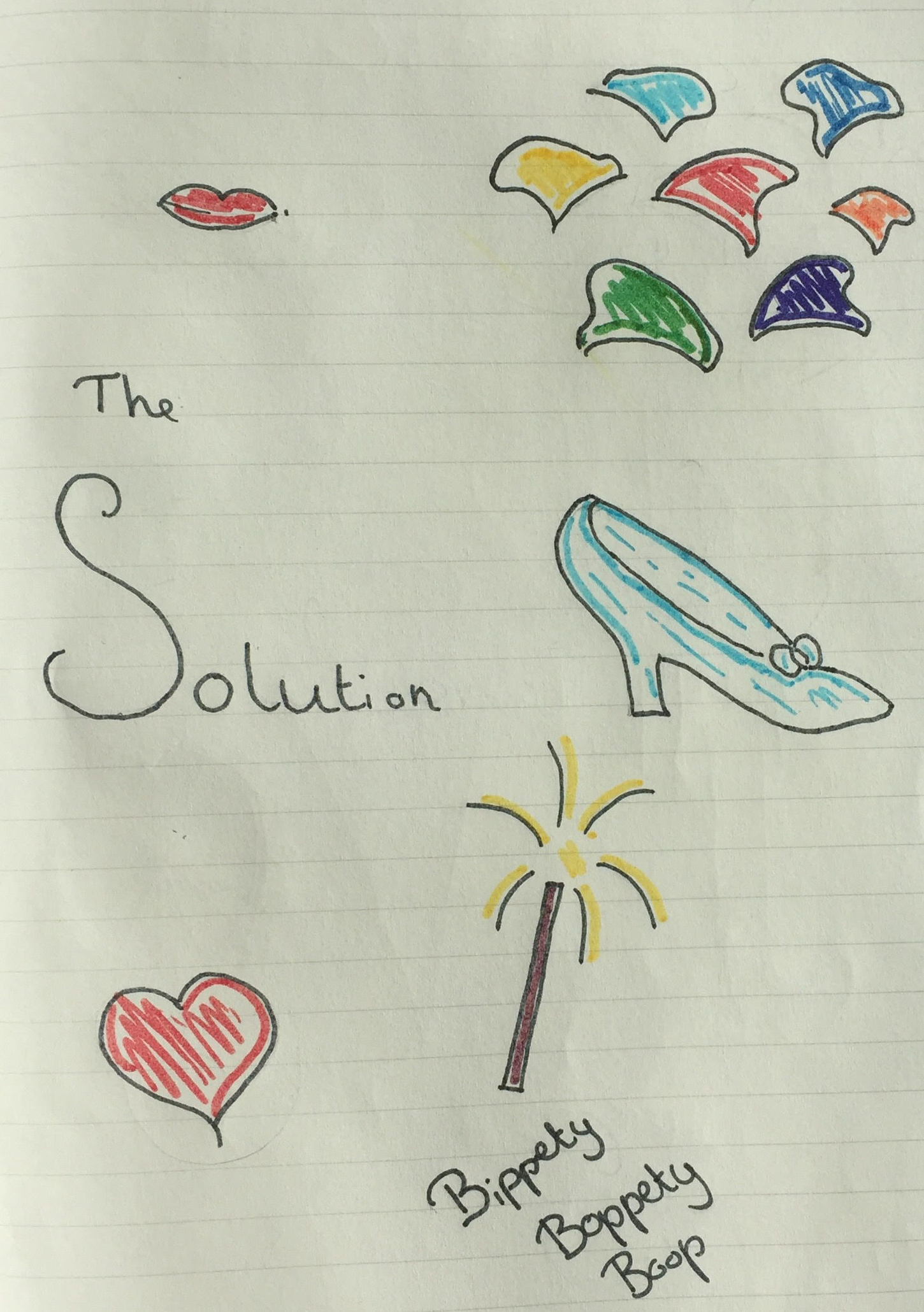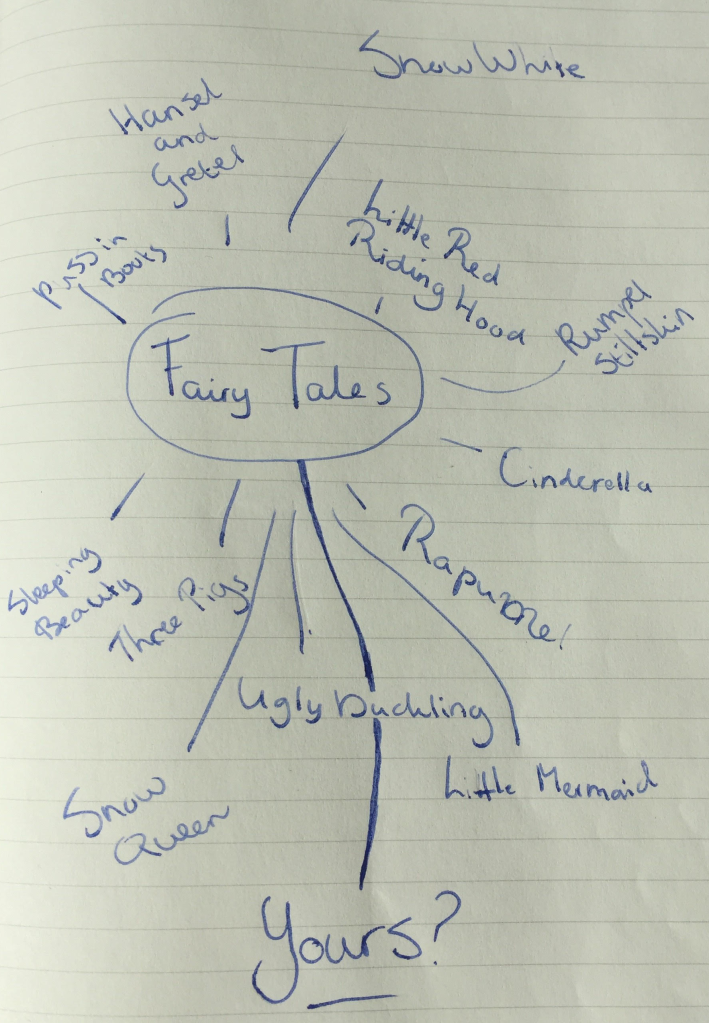
Once upon a time, they lived happily ever after.
When I hear those first four words, I am all ears. It’s fairy tale time! What’s today’s story? Will it be about a pretty princess, rescued by her amazing Prince Charming? Will we hear of a child who gets lost in the woods? A sweet, talking animal, perhaps? Or a magical queen who is hated by everyone else?
Fairy tales are my favourite stories in the world. They’re short and they’re sweet, and we know them complete. Most fairy tales are very old indeed, but they’ve never ceased to be popular. Furthermore, new versions of the fairy tales we’ve all grown up with are released every day.
So, have you always wanted to write a fairy tale, but have you never known where to start? Or do you think you’ve got what it takes to be the next Grimm sibling, or Hans Christian Andersen? Then read on!
The Magic Ingredients: What You Need


You can’t write a fairy tale without the necessities: pen and paper. You need to doodle, take notes, and write all your thoughts down.
The other thing you need may sound obvious, but is nevertheless quintessential: fairy tales. Take them all. Buy them all. Read them all. You can only write your own version when you know the source material. It might also help to read secondary literary about fairy tales, because they will show you fairy tales in a different light.
In the following step, I will write about the elements that are needed for a fairy tale. Let’s call it Fairy Tales for Dummies.
Step One: Fairy Tale Essentials – Pick Your Plot

Fairy tales are both the easiest and the hardest stories to write: they’re very short. They range from one page to five at the very most. And because they’re so short, there’s no time to have fully-developed characters, or exquisite storylines that might eventually earn you a Nobel Prize for Literature. Instead, fairy tales are filled with archetypes, or even what we now consider clichés.
While I was doing my research for this instruction, I noticed that most fairy tales follow one of two basic plots. Needless to say, there are many more plots and variations on them, but these two are the easiest to use in your very own fairy tale.
The first one, called Rags to Riches, is about a poor person, hated by their family or the entire society, but somehow manages to climb the social ladder and eventually even ends up as a member of the royal family. Cinderella is the most famous example of this.
The second one is called Overcoming the Monster. As you might have guessed, it’s about how the hero is threatened by a monster or an evil being, and sets out to slay it. Obviously, they succeed and live happily ever after. An example of this is Sleeping Beauty.
So, the first step you have to take is to pick one of these plots. I found that both of these plots make use of three basic elements: a hero, a conflict, and a solution. If you have these, you’re good to go. In the following steps, I will delve a bit deeper into each of them.
Note: I’ve borrowed the title of these plots from Christopher Booker’s book The Seven Basic Plots – it’s quite interesting.
Step Two: “The Fairest of All” – The Good


The first thing you need to pick when you want to write a fairy tale is a hero, the one who we all root for, the one who will save the world and will live happily ever after, and get married to their true love. Here’s what they’re like:
All heroes look good. That’s a fact. Snow White is beautiful, and so are the other princesses. Some are even described to be so beautiful that they would make the sun smile. Prince Charming, of course, is the most handsome man who has ever walked the face of the earth. They’re almost perfect, every single one of them.
Why? Well, simply because there’s no time for flawed characters. Good people win, the bad don’t. The good people are beautiful, they are very skilled and successful, they are friendly, they are loved, and they’ve got many friends.
Write down what kind of person you would like as your protagonist – male or female, rich or poor, it’s all up to you. Just make sure they’re lovable by everyone.
By everyone? No, there’s always that one person who hates this perfect fairy tale character. That’s because we need a conflict. Move on to the next step.
Step Three: “Ugly As Sin” – The Conflict


The world would be a boring place if everything was good, perfect, lovely, and happy. That’s why we need a villain, or a different conflict to shake things up. And just as Good is absolutely perfect, Bad isn’t simply bad, it’s truly evil. It’s ugly, it’s terrible, it’s ghastly!
Usually it’s about a specific characteristic the Good possesses and that someone else, or an entire society wants – or that Bad makes use of. This can be a very good quality, like beauty – but too much beauty makes others jealous (Snowwhite). Or naiveté – innocence is an admirable character trait, but if you believe everything someone says, it makes you vulnerable (Little Red Riding Hood).
Sometimes the issue isn’t that the hero possesses a unique characteristic, but rather the opposite: they lack something. There are several fairy tales where the hero is an outsider, hated for not being rich enough, or pretty enough (The Ugly Duckling). It is then your task to make sure they redeem themselves and end up happily ever after.
So now your fairy tale has two elements: a hero, and a conflict. How will it end? Will we ever know? Well, yes, just read on for the next step.
Step Four: “Happily Ever After” – The Solution


You know how these stories end: they get married. They get rich. They become a prince(ss). And so on. There simply has to be a happy ending. It can’t be a fairy tale without having one, right?
Make sure your ending is as fairy-tale like as possible. Pull out all the stops, and turn your party into the celebration of the century. We need fireworks, we need a wedding, we need everything, and then some. And what we need most, of course, is the punishment of the villain. If your story featured one, make sure they get their just dessert. They almost killed your hero, or at least made them very unhappy. Off with their heads!
Note: My favourite endings are always the most brutal ones. For instance, some of the ugly stepsisters were forced to dance to their deaths in red-hot iron shoes. But my favourite has to be where someone was put in a barrel with sharp nails on the inside, and then dragged through the streets until she was dead. Ouch. And it works, really. I can’t bear watching any type of violence on tv, but I the gorier these fairy tales, the better.
Step Five: “At the Edge of a Large Forest” – The Setting

Now that we’ve established there are three essential fairy tale elements, it’s time to take a look at some aspects that are also pretty important, but have a little wriggle room. The first one is the location, or setting. Usually fairy tales take place in either a castle, or a small village, or, of course, a forest, both enchanted or perfectly normal. Obviously there might be more, but these three are the most important ones. It’s a very good idea to have your fairy tale be set in one of these, because it will be familiar to your audience. They will know from the off-set that it’s a fairy tale they’ll be reading.
However, if you want to change it up a bit, you can take the aforementioned characteristics, the clichés if you will, and transport them to a different setting. You can still have gloriously Good and ultimately Evil characters, but have a completely unexpected setting. That way, your story might have a more modern feel to it, or it allows you to add a new layer previously unmentioned in traditional fairy tales (you could have a feminist Sleeping Beauty, or a Little Red Riding Hood who’s so obsessed by her phone that she fails to notice her grandmother’s large ears). Just make sure it makes sensem however – there’s no point in having a modern city that’s scared by a single wolf, for instance.
Step Six: “Listen to me” – The Audience

Most fairy tales have a very specific audience in mind: children. They are written in such a way that children could easily understand them, and parents would read them to their children while also thinking of their own experience with these stories. And for good reason: what better way to teach children something while also telling them exciting stories?
However, you don’t have to write your fairy tale for children. There are countless examples of stories which have dutifully followed up all the fairy tale rules, but eventually decided to do something completely different with it. Take the Shrek films, for instance: they used all the characters, there was a clear conflict, an obvious lesson, but still everyone can tell it’s not exactly a fairy tale. The result is a hilarious spoof on a myriad of fairy tale characters, but simultaneously an entirely new and fresh fairy tale.
Other examples are the Disney film Maleficent (they turned Evil into Good at the end!), Roald Dahl’s Revolting Rhymes, or, perhaps my favourite one: The Princess Bride by William Goldman.
Note: Some fairy tale retellings are specifically not written for children. Somehow helpless women and strong and beautiful princes have always had this, well, extremely adult allure. Try googling Anne Rice and fairy tales. It’ll astound you.
Final Step: “I Know Everything” – Make It Your Own!
So, now that I’ve told you everything you need in order to write a good fairy tale, it’s up to you. Gather all your creativity, evoke the magic, make sure you’ve got pen and paper at the ready, and get started!
Will you write a traditional fairy tale, with all the classic elements? Or will you turn everything upside down and give it a very modern twist? It’s all up to you.
I hope you had as much fun reading this as I had writing it. Have fun writing your very own fairy tale! Do not forget to share your fairy tales in the comments!



Thanks for sharing Elke, I will save this post because I love to write and maybe I can try to write a fairy tale eheh all the best and greetings from Portugal, PedroL
LikeLike
Hi Pedro, thank you so much for your lovely comment! Have fun writing your fairy tale, and let me know what you’ve come up with!
Elke
LikeLike
eheh thanks Elke 🙂 PedroL
LikeLike